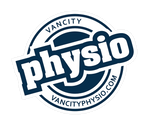Osteoarthritis is the most common type of arthritis and can develop in any joint but commonly occurs in weight bearing joints like your knees and hips.
Your hip joint
Joints are places where your bones meet. Bones, muscles, ligaments and tendons all work
together so that you can bend, twist, stretch and move about. Your hips are one of the largest joints in the body. They’re called ball and socket joints. That’s because the head of your thigh bone (femur) is shaped like a ball that fits inside a rounded socket (acetabulum) in your pelvis.
The ends of your bones are covered in a thin layer of cartilage that acts like a slippery cushion absorbing shock and helping your joints move smoothly.
With OA, the cartilage becomes brittle and breaks down. Because the cartilage no longer has a smooth, even surface, the joint becomes stiff and painful to move.
Eventually, the cartilage can break down so much that it no longer cushions the two bones. This causes pain, stiffness and swelling.
Symptoms
The symptoms of hip osteoarthritis usually happen gradually and vary from person to person. They may include:
- pain in the hip joint
- pain in your groin or thigh that radiates to your buttocks or your knee
- stiffness and/or swelling of the hip joint
- grinding, creaking or crunching sound when moving the hip
- it may feel like your hip ‘locks’ or ‘sticks’ during periods of activity
- reduced range of movement.
Causes
Many factors can increase your risk of developing osteoarthritis of the hip, including:
- age – OA occurs more often in people over 45
- High BMI/ obesity – extra weight on your hips can increase strain and may lead to premature or increased joint damage
- gender – 3 in 5 people who develop OA are female*
- family history of OA
- joint damage – for example, from a sports injury eg.ACL tear or a car accident
- joint abnormalities – for example, developmental dysplasia of the hip, a condition that affects the hip joint in babies and young children.
Diagnosis
If you’re experiencing pain or stiffness in or around your hip, it’s important that you discuss your symptoms with your doctor. Getting a diagnosis as soon as possible means that treatment can start quickly. Early treatment will give you the best possible outcomes.
To diagnose your condition, your doctor/physiotherapist will:
- take your medical history – this will include finding out about your symptoms, how long you’ve had them, what makes them better or worse
- physically examine your hip.
- Imaging: X-Ray confirmation of the OA is an important step to confirming your diagnosis.
Treatment
There’s no cure for hip OA, but it can be managed effectively using a combination of exercise, weight management, medication from your GP, lifestyle choices and in some cases, surgery will be necessary.
Exercise
Exercise is one of the most important strategies for managing OA. A tailored exercise program developed by a physiotherapist or exercise physiologist can help reduce your hip pain and improve your hip function. Evidence suggests that while no one particular type of exercise is better than another, a combination of certain exercises is likely to be the most effective.
These exercises include:
- strength training specifically targeting your legs
- aerobic exercise – these are exercises that get you moving and increases your heart rate (e.g. brisk walking, cycling, swimming) and will help improve the health of your heart and lungs (cardiovascular system)
- balance training
- exercises that move your joint through its full range (range of motion exercises).
When choosing an exercise for yourself, think about what you enjoy and what you’re likely to keep doing. The best results occur when you exercise at least three times per week.
If pain prevents you from exercising, you may find that warm water exercise is a good starting point. Warm water pools offer the comfort of warmth and the buoyancy of the water to ease the load on your joints. For those able, cycling is a good option for non-weight-bearing exercise.
Weight management
Being overweight or obese increases the risk of developing hip OA. It’s also highly likely to speed up how quickly your OA develops or progresses. Evidence shows a relationship between weight loss and relief of symptoms such as pain and stiffness; even a small amount of weight loss can help. If you’d like to lose weight to improve your symptoms, your doctor and/or a dietitian can assist you in losing weight safely.
Medicines
For some people, medicines are an important part of managing their OA. Tablets, creams, gels or injections may help to reduce pain and improve function.
There are a variety of medicines used in the management of hip OA. Each comes with varying degrees of evidence to support them. These include:
Non-steroidal anti-inflammatory medicines or NSAIDs (e.g. Nurofen, Celebrex, Voltaren)
NSAIDs are available over-the-counter and with a prescription, depending on their dosage and any other ingredients. They may be taken by mouth (orally) as a tablet or capsule or applied directly to the skin (topical) in the form of gels and rubs.
Oral NSAIDs are considered the preferred first-line drug treatment for OA and have been shown to reduce pain and symptoms in hip OA.
Although there’s no solid evidence either for or against topical NSAIDs, it may be worth giving them a short trial to see if they help.
It’s important to note that NSAIDs are designed to be taken at low doses for short periods. Always talk to your doctor before starting NSAIDs as they can cause harmful side effects, especially in older people.
Acetaminophen
Research has shown that paracetamol provides only low-level pain relief and, in some cases, no pain relief at all compared to a placebo in hip OA. However, some people do report that it helps reduce or take the edge off their pain so that they can be more active. If you can’t take NSAIDs they may also be an option. Before using paracetamol, talk with your GP to see if it’s appropriate for you.
Surgery
For some people with hip OA, when all non-surgical treatment options have failed, and hip pain and reduced hip function impact their quality of life, surgery may be an option. In this case, your doctor may refer you to an orthopedic surgeon to discuss your options.
A total joint replacement of the hip is the most common type of surgery for hip OA. It can provide significant pain relief and improved function. However, it’s important to remember that a total hip replacement is major surgery and requires you to commit to months of rehabilitation.
Remember to contact your local family physician and receive professional advice regarding your health.


